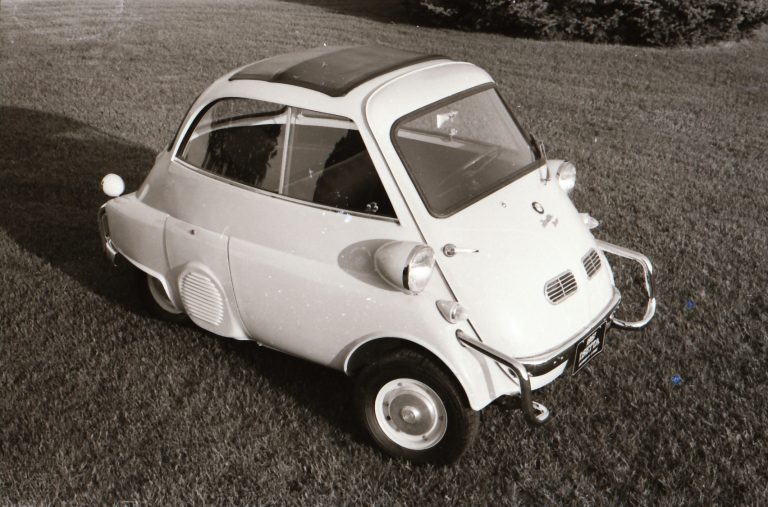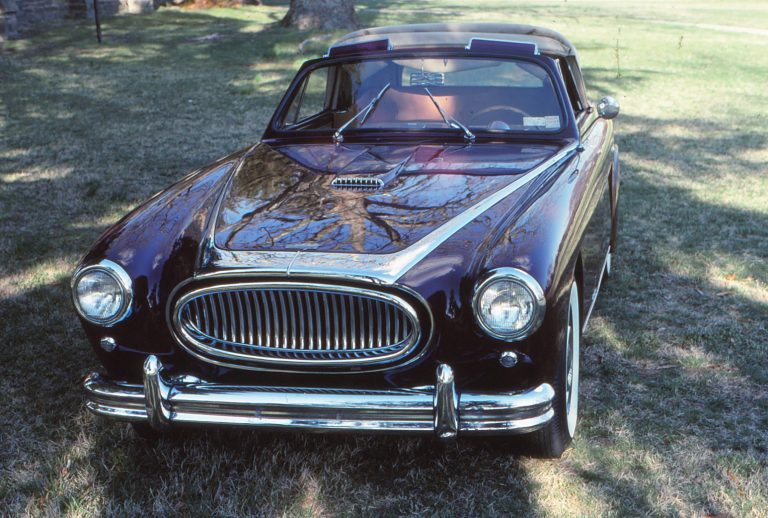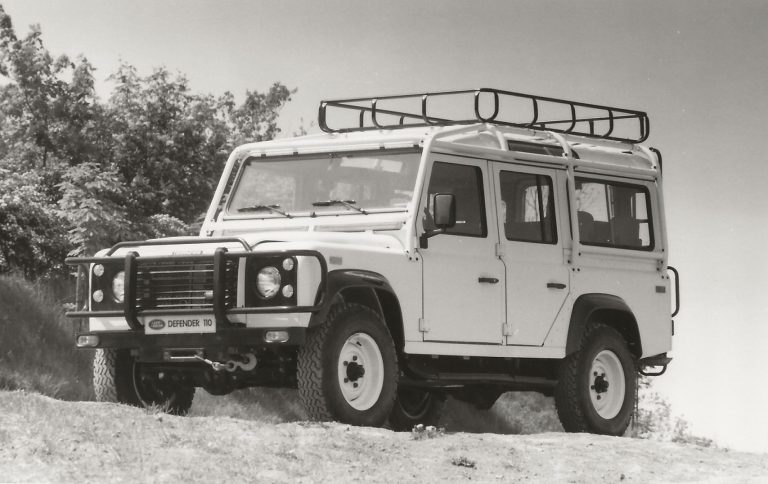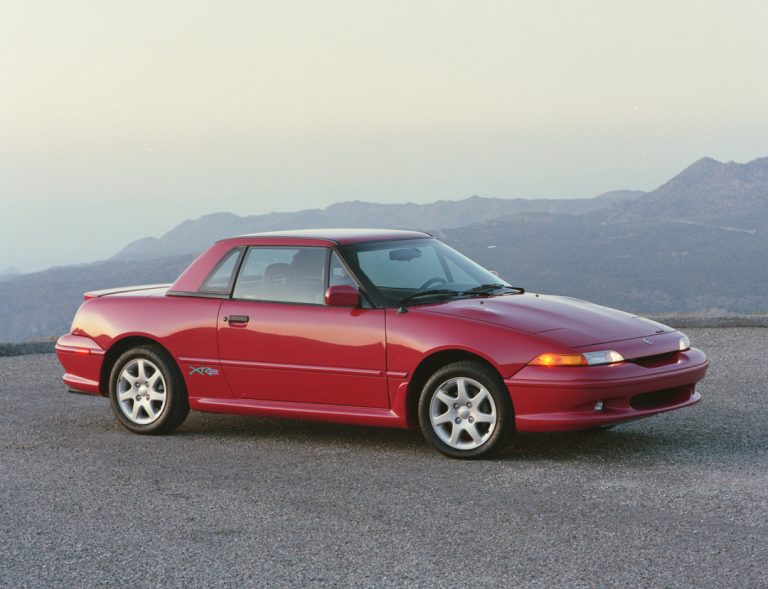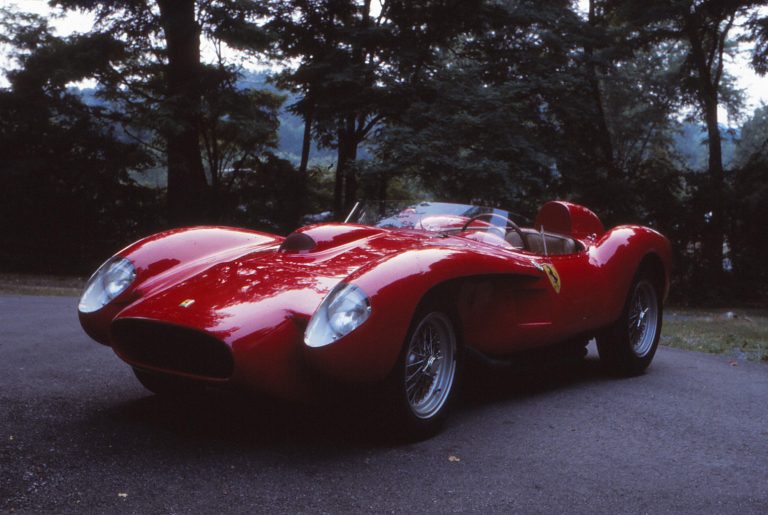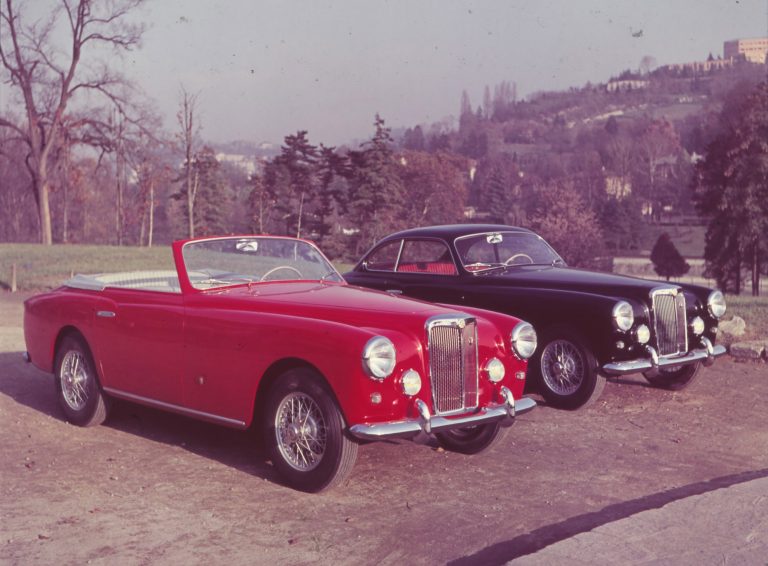History/driving impressions republished by the author, originally published in AutoWeek October 6, 1986
Well-known late-night comedian: “This car is really small.”
Audience: “How small is it?”
WKLNC: “This car is so small that if Santa brought you one for Christmas, he’d leave it in your stocking – while you were still wearing it. It’s so small that if you stop next to “Refrigerator” Perry you’d get a ticket for double parking. It’s so small Dolly Parton would need two just to…”
Well, never mind. Suffice to say that the Berkeley is the smallest car I’ve ever been in. Even an Isetta has more room. Back in the good old prudish ‘50s, when this car was built, just giving a girl a ride meant you had to get married. Wocka, wocka. A rimshot, Perfessor.
But it really isn’t fair to take cheap shots at the car. Its maker, Berkeley Cars Ltd of Biggleswade (we do not make these names up), Bedfordshire, was sincere. Manufacture began in 1955 with a design by Lawrence Bond, famous (or infamous, depending on one’s point of view) for the Bond Minicar. With Bond’s design the firm was aiming at the very bottom of the sports car market. One ad proclaimed simply, “The world’s lowest-priced all-sports car,” the model, the 328 “ (in deference to its engine’s displacement in cubic centimeters), listing at $1695.
Were it just small and cheap, the Berkeley could have been dismissed as just another oddball vehicle from the British automotive cottage industry that sends new manufacturers sprouting like mushrooms after a rain – and it rains a lot in England. But the Berkeley wasn’t just another tube-frame-and-Ford-engine special. Innovations abounded on the little sportster.
It was, in fact, the first-ever fiberglass unit body, proceeding even Lotus. The plastic body was reinforced with aluminum at stress points. The engine was carried on a subframe. The diminutive package weighed in at 710lbs.
The Berkeley also had four-wheel independent suspension, with unequal length A-arms up front and swing arms with coil-over shocks at the rear. Not the best of all irs systems perhaps, but Berkeley could have taken the easy way out with leaf springs and solid axle. The rear suspension along with the lightweight, however, gave the car an odd look with no one aboard; the wheels tuck up in positive camber, waiting for a driver’s weight to bring them down to working angles.
Front-wheel drive also found its way onto the Berkeley, along with a transversely mounted engine. It sounds modern, but it was hardly an innovation – it was a throwback to cycle car days. The power plant, depending on the model, was either a 322cc British Anzani a, 328cc Excelsior (18.2bhp) two-stroke twin or a 492cc Excelsior triple. Request for more power resulted in the installation of the 50hp 692cc four-stroke Royal Enfield twin. In any case, a separate motorcycle clutch and transmission were driven by chain. Power was transferred to the front axle by chain also.
A small chain. Everything about the Berkeley was smaller than you’d ever guess. Tires were 5.20–12s. The track was 42 in – little wider than the length of a yardstick – on a wheelbase (70in) over a foot shorter than that of a contemporary Yugo. The rear end was so light it can be picked up by one person.
The size, however, could have been a problem in an unusual way, as I found out when testing a Berkeley from the collection of the Rear View Mirror Museum in Nags Head, NC. The car bottoms easily. With two up the high-performance exhaust drags over the slightest irregularity.
Another problem with two up is shifting gears. The Berkeley, thanks to a three speed cycle transmission, has “progressive” shifting. The shifter moves from front to back, from firstto third, in a more or less straight line, zigzagging for each gear. Oh, there’s reverse too. The hitch is the lever: It’s below the driver’s right knee, out of sight – not ideal for learning a new pattern. It can, with patience, be made to work quite well, however.
Patience, too, is required of those interested in brisk acceleration. Our Berkeley, like the car Road & Track tested way back when, was equipped with the 328cc engine. Road & Track timed it over the quarter-mile at 25.8sec, with an eventual top speed, with top up, of 65 mph (with top down, the terminal speed drops to 58 mph.) The big – relatively speaking – Royal Enfield engine would boost top speed to 90 mph, for those so brave.
Seats are none-adjustable, and if you happen to fit that’s fine. Berkeley also came out with a four-place version, though I can’t imagine where it found room for two more people. Even more mystifying was a coupe version. One gets in the open version by lowering oneself into the seat from above. How one entered the coupe I have no idea.
The Berkeley drives like a miniature thunderstorm, with lots of noise in a very small place. The exhaust is loud and the two-stroke is raucous, the chains rattle and piston slap away at their home, amplified by cooling fans. This, friends, is a four-wheel moped.
Nevertheless Berkeley actually sold relatively many of the sportsters, some 4500 between 1956 and 1960 (2500 of those were three-wheeled versions built to take advantage of British tax laws). Reality caught up with the Biggleswade, however, and a more conventional model powered by a Ford 105E engine came too late to save the firm. The Berkeley, for all its innovations, was a collection of evolutionary dead ends.
But if you ever want to go skateboarding, but don’t like the idea of up-grades – wocka, wocka – have we got the car for you!
He who laughs last, laughs best. According to classics.com, in 2020 a Berkeley recently sold for $35,200. The average price is just above $20,000. A “project” 1958 Berkeley SE492 sold on BringaTrailer.com for $6,300.
Biggleswade was made marginally famous by being mentioned in the Monty Python Flying Circus Piranha Brothers sketch..





